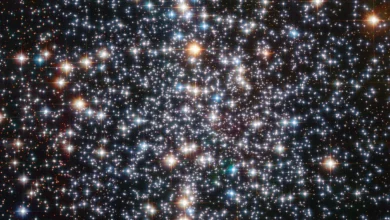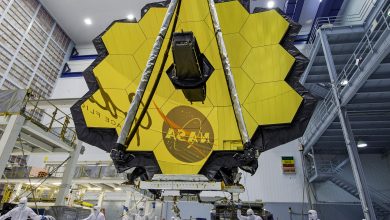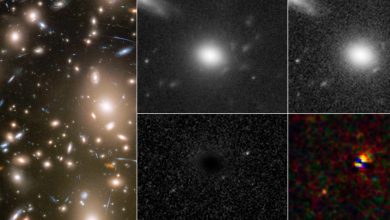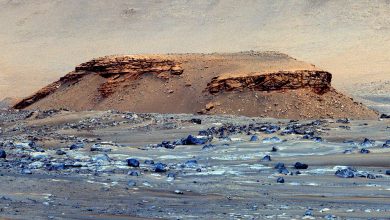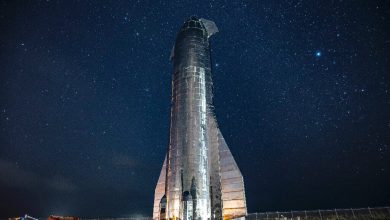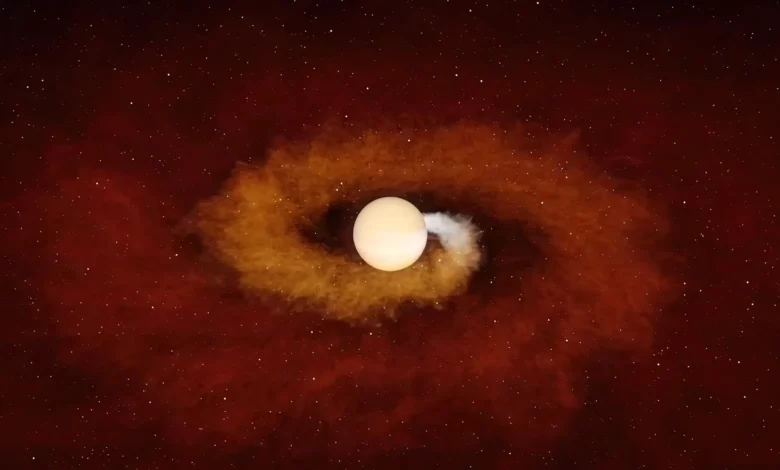
This artist’s concept shows a planet gradually spiraling into its host star. The Jupiter-size planet pulls gas away from the star, sending it into space. There, the gas cools and becomes dust, which is visible to astronomers. Credit: R. Hurt & K. Miller (Caltech/IPAC)
A star nearing the end of its life swelled up and absorbed a Jupiter-size planet. In about 5 billion years, our Sun will go through a similar end-of-life transition.
In a groundbreaking discovery, astronomers observed an aging star consuming a planet for the first time, providing insights into our Sun’s eventual fate, which will undergo a similar process in about 5 billion years.
A new study published in the journal Nature documents the first observation of an aging star swallowing a planet. After running out of fuel in its core, the star began to grow in size, shrinking the gap with its neighboring planet, eventually consuming it entirely. In about 5 billion years, our Sun will go through a similar aging process, possibly reaching 100 times its current diameter and becoming what’s known as a red giant. During that growth spurt, it will absorb Mercury, Venus, and possibly Earth.
Astronomers have identified many red giant stars and suspected that in some cases they consume nearby planets, but the phenomenon had never been directly observed before. “This type of event has been predicted for decades, but until now we have never actually observed how this process plays out,” said Kishalay De, an astronomer at the Massachusetts Institute of Technology in Cambridge and the study’s lead author.
The gradual demise of a planet orbiting a growing host star is illustrated in this video. The planet pulls a spray of gas away from the star as it spirals closer. Once the planet is devoured, the star grows in brightness and size, but will eventually return to how it was before the merger. Credit: R. Hurt & K. Miller (Caltech/IPAC)
Researchers discovered the event – formally called ZTF SLRN-2020 – using multiple ground-based observatories and NASA’s NEOWISE (Near-Earth Object Wide Field Infrared Survey Explorer) spacecraft, which is managed by the agency’s Jet Propulsion Laboratory. The planet was likely about the size of Jupiter, with an orbit even closer to its star than Mercury’s is to our Sun. The star is at the beginning of the final phase of its life – its red giant phase, which can last more than 100,000 years.
As the star expanded, its outer atmosphere eventually surrounded the planet. Drag from the atmosphere slowed the planet down, shrinking its orbit and eventually sending it below the star’s visible surface, like a meteor burning up in Earth’s atmosphere. The transfer of energy caused the star to temporarily increase in size and become a few hundred times brighter. Recent observations show the star has returned to the size and brightness it was before merging with the planet.
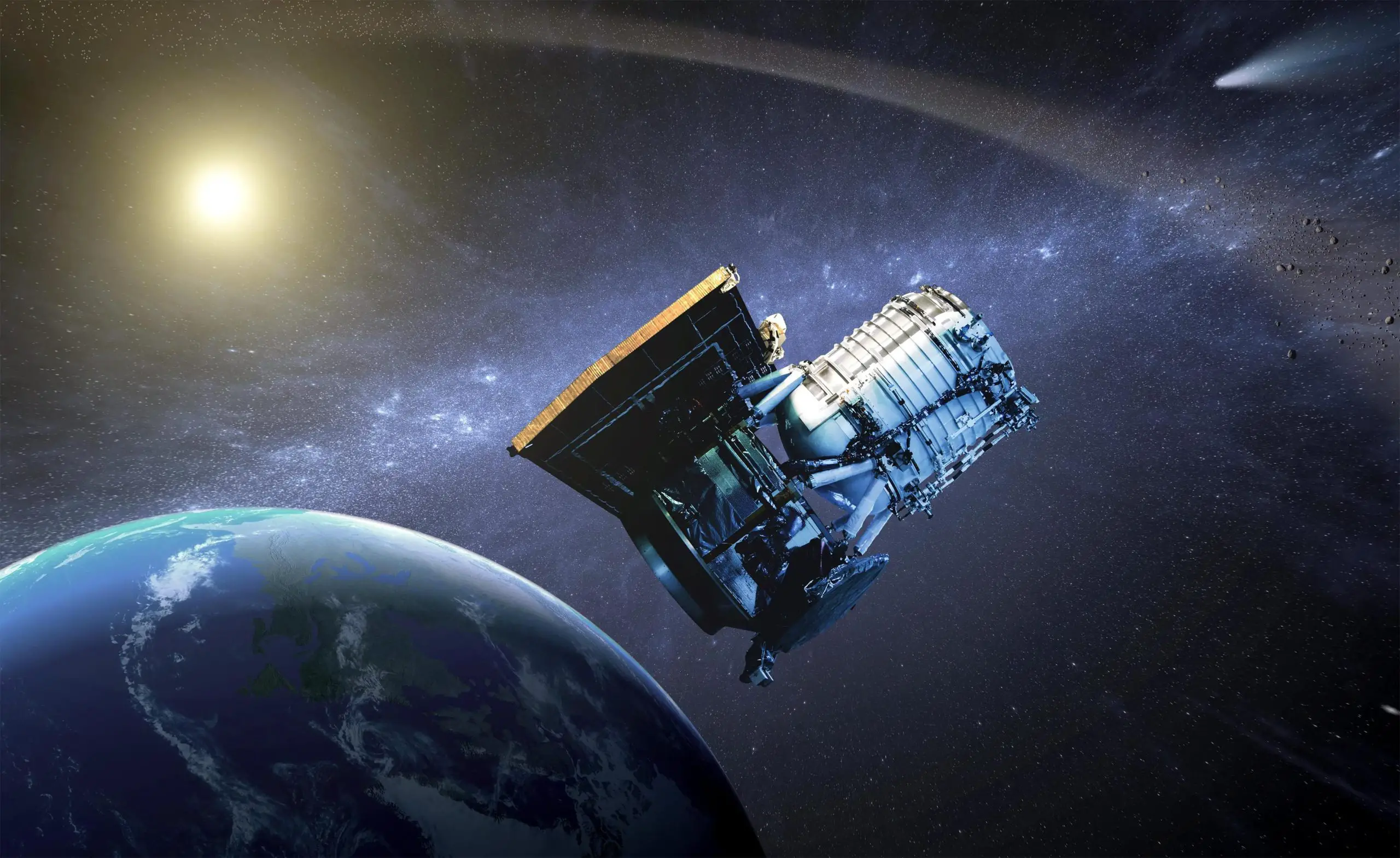
All-Sky Map Quest
The flash of optical light (visible to the human eye) after the planet’s demise showed up in observations by the Caltech-led Zwicky Transient Facility (ZTF), an instrument based at Palomar Observatory in Southern California that looks for cosmic events that change in brightness rapidly, sometimes in a matter of hours. De was using ZTF to search for events called novae – when a dead, collapsed star (known as a white dwarf) cannibalizes hot gas from another nearby star. Novae are always surrounded by flows of hot gas, but follow-up observations of the flash by other ground-based telescopes showed much cooler gas and dust surrounding the star, meaning it didn’t look like a nova or anything else De had ever seen.
So he turned to the NEOWISE observatory, which scans the entire sky in infrared light (a range of wavelengths longer than visible light) every six months. Launched in 2009 and originally called WISE, the observatory produces all-sky maps that enable astronomers to see how objects change over time.
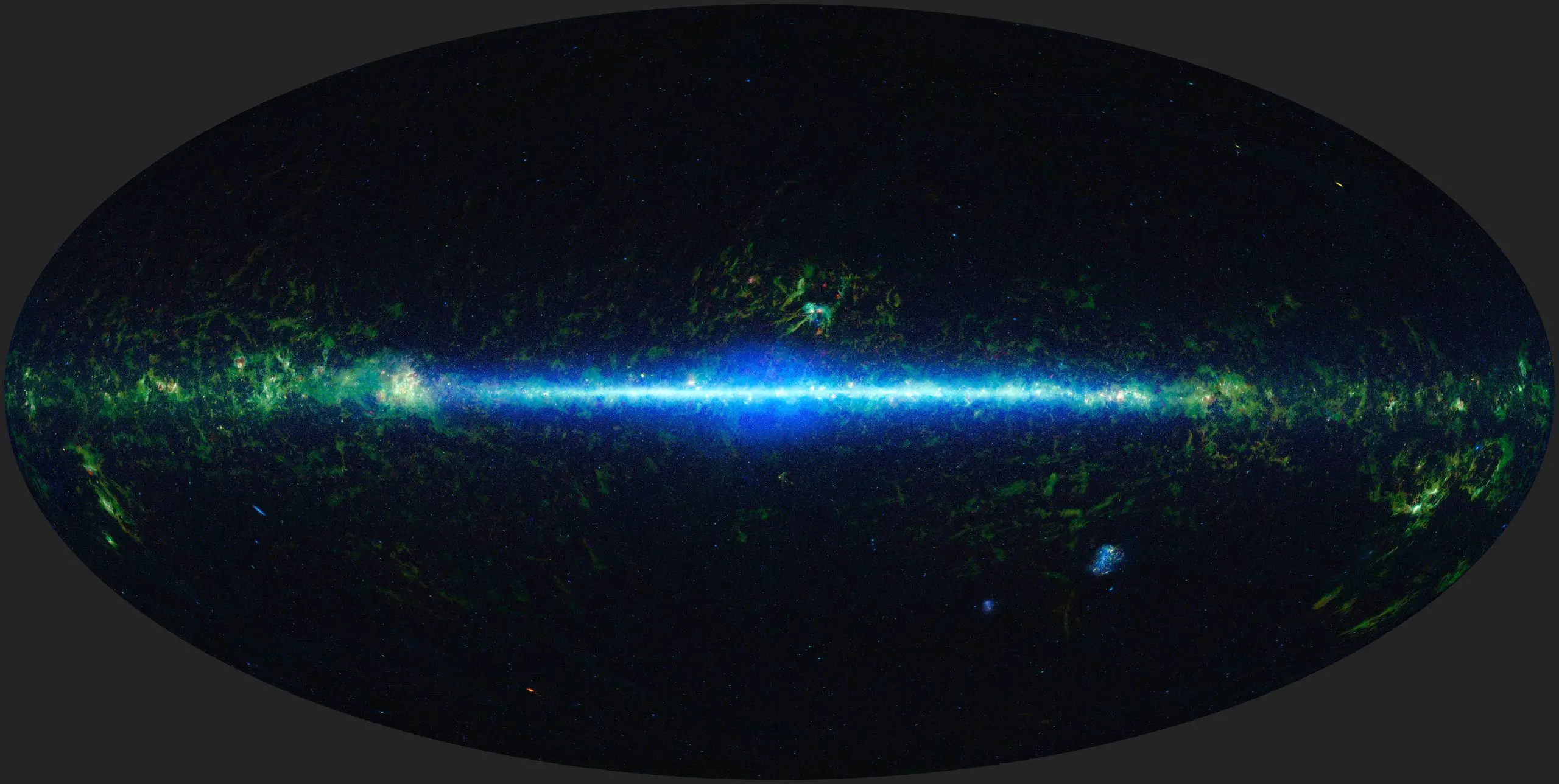
Looking at the NEOWISE data, De saw that the star brightened almost a year before ZTF spotted the flash. That brightening was evidence of dust (which emits infrared light) forming around the star. De and his colleagues think the dust indicates that the planet didn’t go down without a fight and that it pulled hot gas away from the puffy star’s surface as it spiraled toward its doom. As the gas drifted out into space, it would have cooled and become dust – like water vapor becoming snow. Even more gas was then flung into space during the collision of the star and the planet, producing more dust visible to both the ground-based infrared observatories and NEOWISE.
“Very few things in the universe brighten in infrared light and then brighten in optical light at different times,” said De. “So the fact that NEOWISE saw the star brighten a year before the optical eruption was critical to figuring out what this event was.”
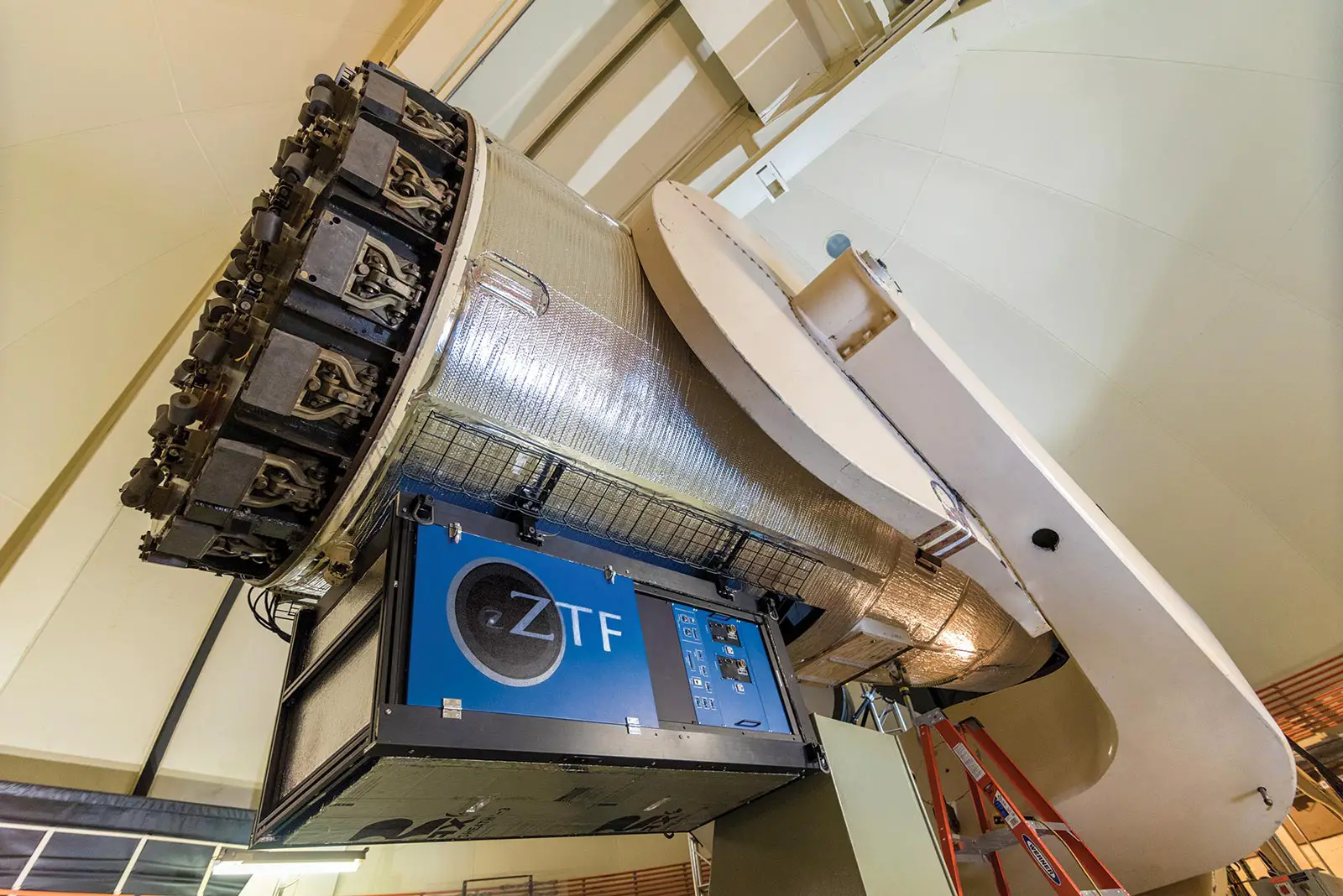
Five billion years from now, when our Sun is expected to become a red giant, swallowing up Mercury, Venus, and possibly Earth, the light show should be much more subdued, according to De, since those planets are many times smaller than the Jupiter-size planet in the ZTF-captured event.
“If I were an observer looking at the solar system 5 billion years from now, I might see the Sun brighten a little, but nothing as dramatic as this, even though it will be the exact same physics at work,” he said.
Most mid-size stars will eventually become red giants, and theorists think that a handful of them consume nearby planets each year in our galaxy. The new observations provide astronomers with a template for what those events should look like, opening up the possibility of finding more.
“This discovery shows that it’s worthwhile to take observations of the entire sky and archive them, because we don’t yet know all of the interesting events we might be capturing,” said Joe Masiero, deputy principal investigator for NEOWISE at IPAC at Caltech. “With the NEOWISE archive, we can look back in time. We can find hidden treasures or learn something about an object that no other observatory can tell us.”
For more on this discovery:
Reference: “An infrared transient from a star engulfing a planet” by Kishalay De, Morgan MacLeod, Viraj Karambelkar, Jacob E. Jencson, Deepto Chakrabarty, Charlie Conroy, Richard Dekany, Anna-Christina Eilers, Matthew J. Graham, Lynne A. Hillenbrand, Erin Kara, Mansi M. Kasliwal, S. R. Kulkarni, Ryan M. Lau, Abraham Loeb, Frank Masci, Michael S. Medford, Aaron M. Meisner, Nimesh Patel, Luis Henry Quiroga-Nuñez, Reed L. Riddle, Ben Rusholme, Robert Simcoe, Loránt O. Sjouwerman, Richard Teague & Andrew Vanderburg, 3 May 2023, Nature.
DOI: 10.1038/s41586-023-05842-x
More About the Mission
Launched in 2009, the WISE mission surveyed the entire sky in infrared light twice, capturing images of around three-quarters of a billion celestial objects, such as distant galaxies, stars, and asteroids. The mission concluded in 2011, but in 2013, NASA repurposed the spacecraft for tracking asteroids and other near-Earth objects (NEOs), rebranding both the mission and the spacecraft as NEOWISE.
NASA’s Astrophysics Division within the Science Mission Directorate had JPL manage and operate WISE, with Edward Wright from UCLA serving as the principal investigator. The mission was competitively chosen under NASA’s Explorers Program, managed by the agency’s Goddard Space Flight Center in Greenbelt, Maryland.
JPL manages and operates the NEOWISE mission on behalf of NASA’s Planetary Defense Coordination Office within the Science Mission Directorate in Washington. The University of Arizona hosts the principal investigator, Amy Mainzer. The Space Dynamics Laboratory in Logan, Utah, constructed the scientific instrument, while Ball Aerospace & Technologies Corp. of Boulder, Colorado, built the spacecraft. IPAC at Caltech in Pasadena handles science data processing, and Caltech manages JPL for NASA.

